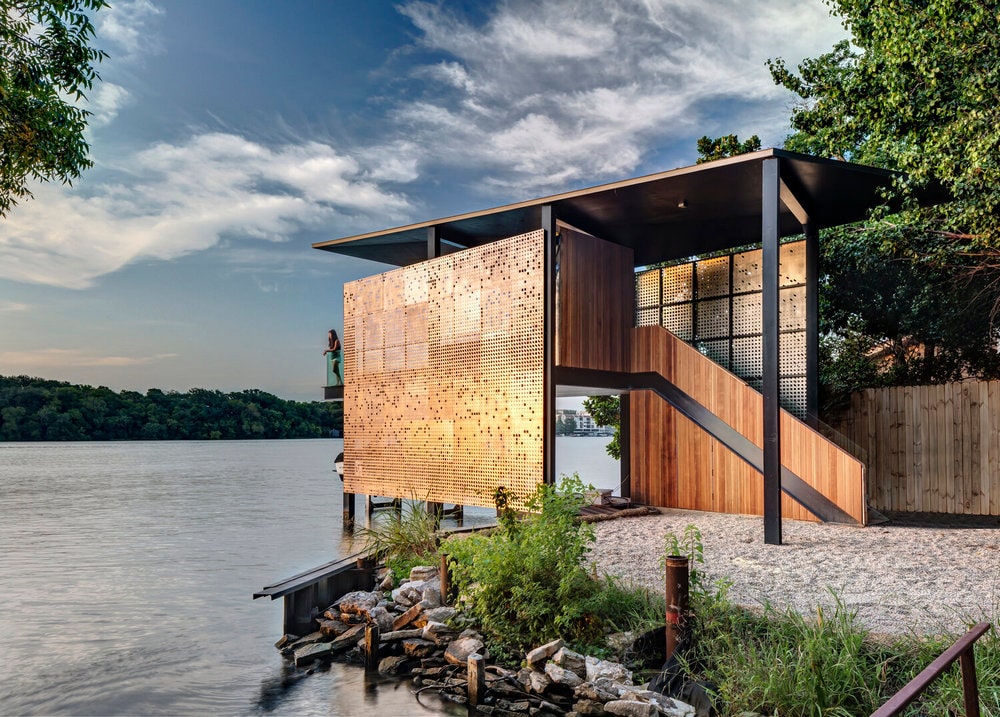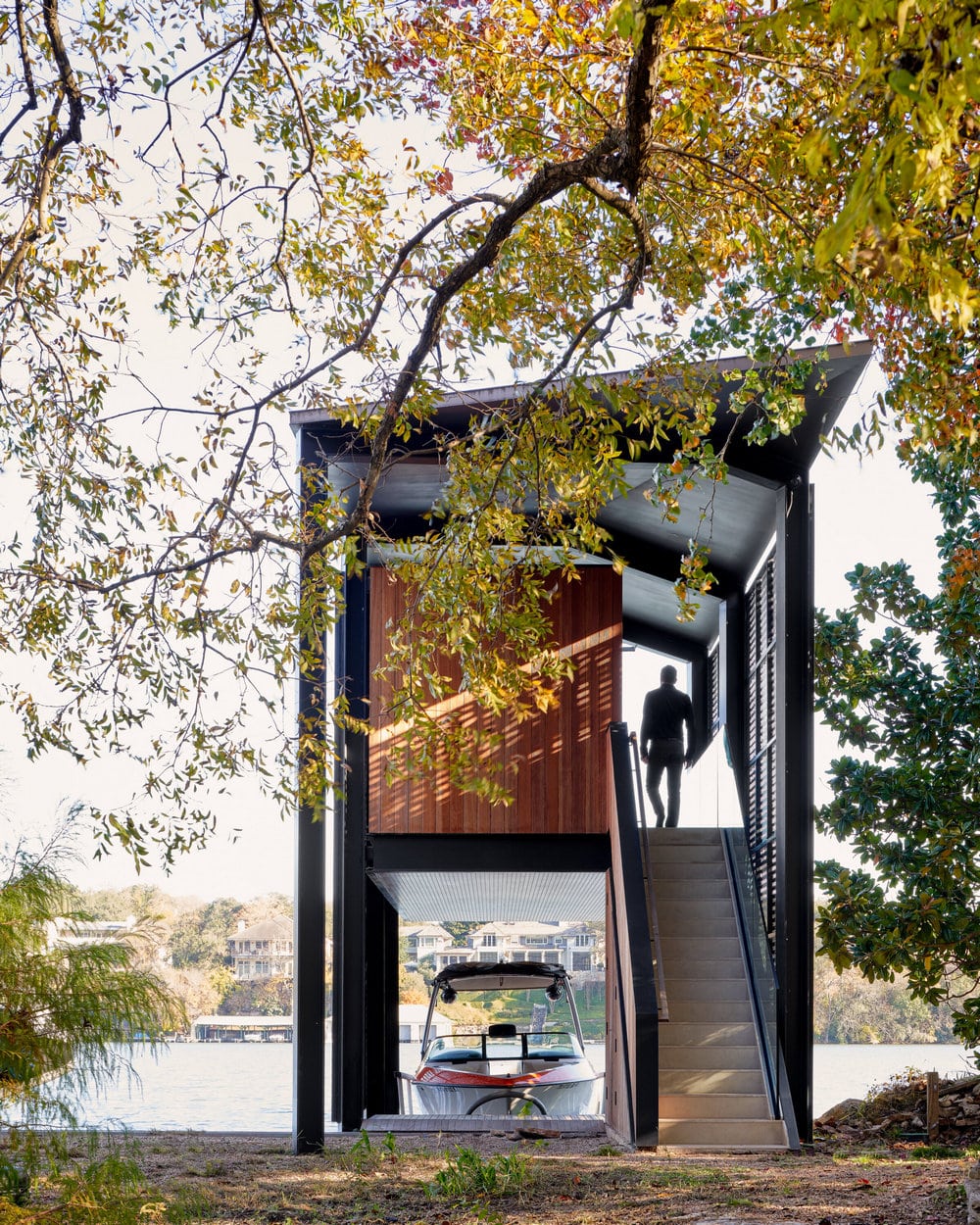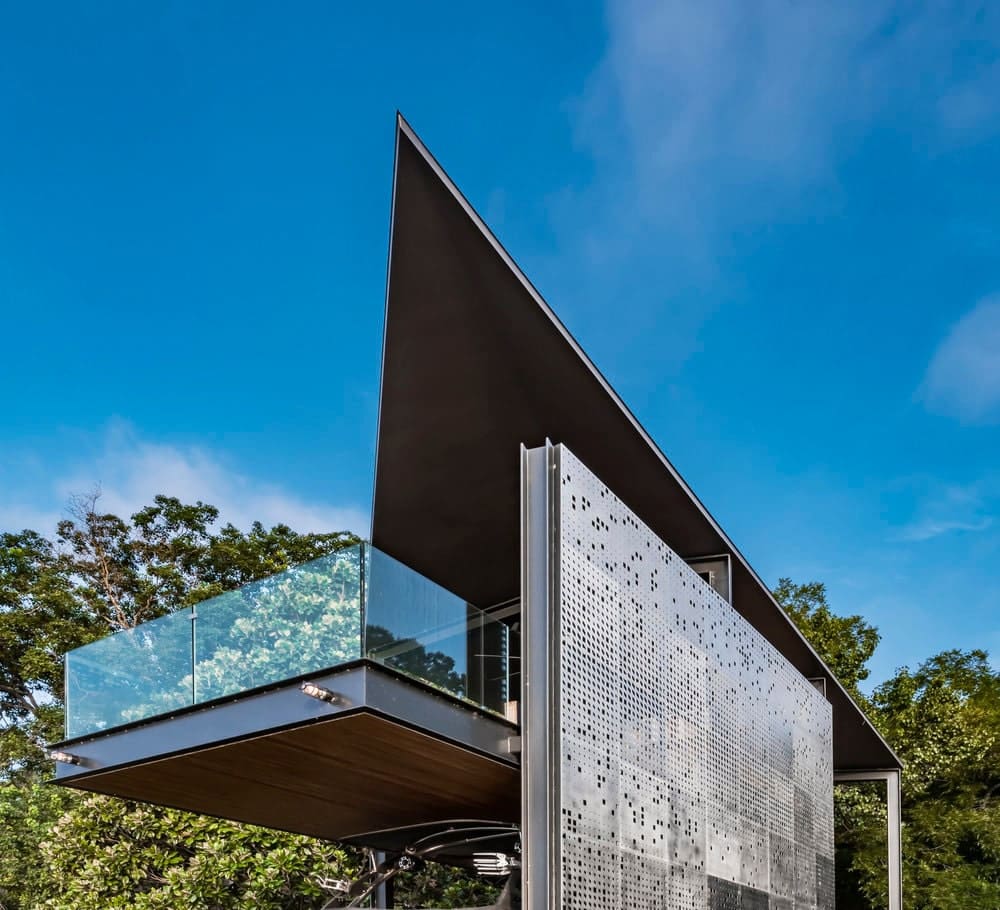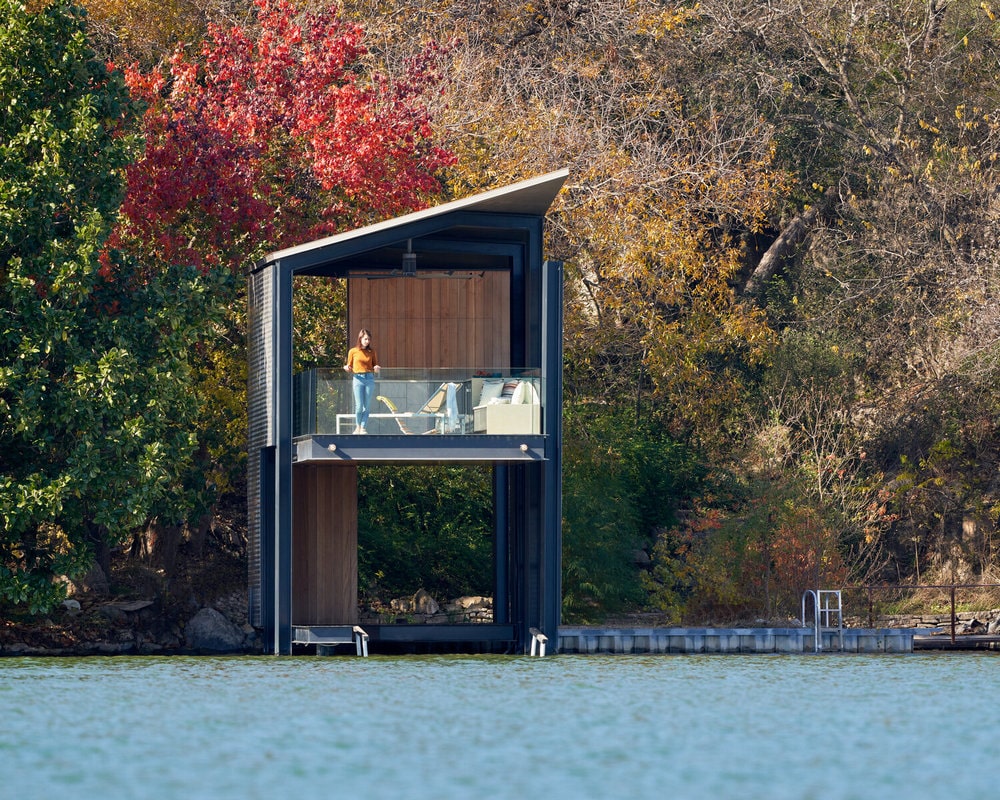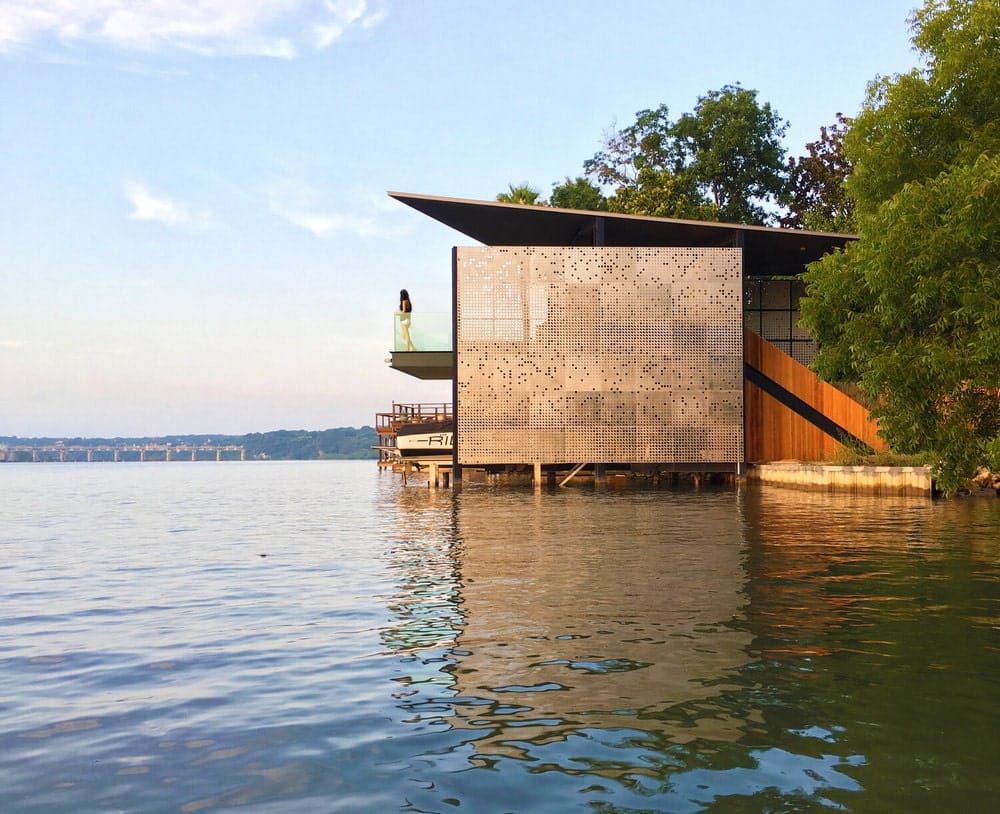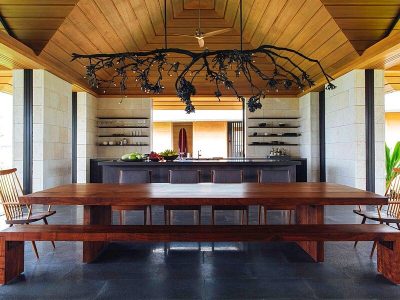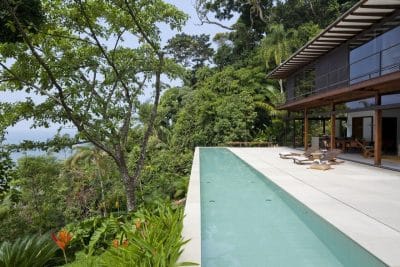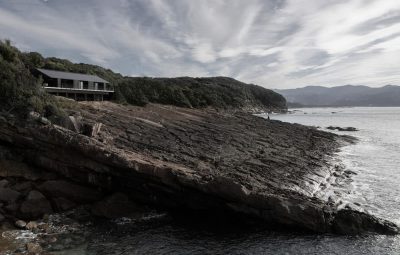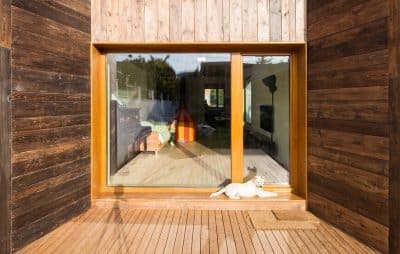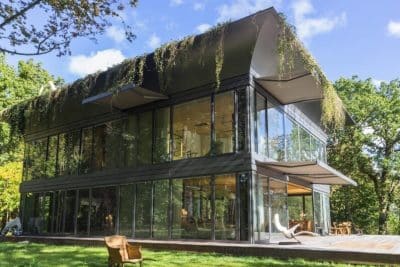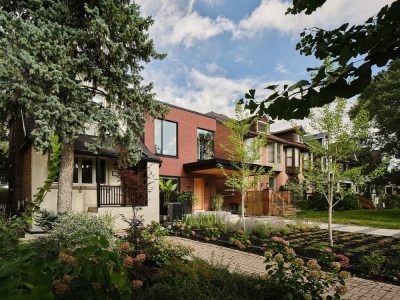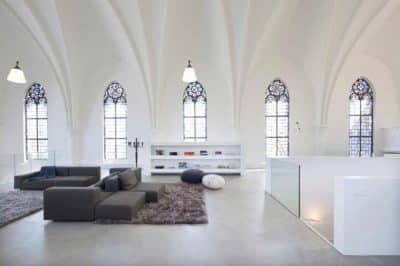Project: Filtered Frame Dock
Architects: Matt Fajkus Architecture
Architecture Team: Matt Fajkus, David Birt, Ian M. Ellis
General Contractor: Risinger Build
Millwork: Delta Millworks
Structural Engineer: Smith Structural Engineers
Landscape Architect: LandWest Design Group
Civil Engineer: Aupperle Company
Location: Austin, Texas
Completion 2018
Photography: Charles Davis Smith, FAIA, Leonid Furmansky, MF Architecture
Text by Matt Fajkus Architecture
Intentionally crafted as an integrated component of the overall site conditions, this dock is located at the base of a steeply sloped, narrow site which tracks along a ravine to a residence elevated above the water. The Filtered Frame Dock is a structure that negotiates between the realms of land, water, and sky by framing one’s experience and understanding of the natural environment, above, along, and in the water.
As an instrument for light and ventilation, the structure is calibrated to provide a comfortable balance of sun and shade, shelter and breezes throughout the year. The perforated screen and roof geometry were calibrated to attain the client’s desire to have fifty percent sun and fifty percent shade throughout the year. On the equinox, light and shadow are perfectly balanced. As the seasons shift, the Filtered Frame Dock provides greater shade during the heat of the summer and welcomes more sun during the cooler winter months.
The mild steel roof composed of two triangular planes is optimized for articulating views to and from the site and modulating direct sunlight exposure. The perforated stainless steel screens on the north and south facades provide structural reinforcement for the frame while filtering sun, breezes, and views.
Sensory experiences are both articulated by and inherent in the relationship between the dock and its natural context. Familiar and comfortable materials such as hardwood and natural stone are used in combination with the dock’s steel frame which is designed and treated to last in the marine environment, enduring its fluctuating environmental conditions. The steel structure and screens are deliberately accentuated and refined to provide dappled light and shade while reflecting ambient light and the warm tones of the surrounding wood, stone, water, and natural vegetation.

